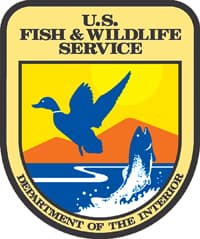Questions and Answers about the Mazama Pocket Gopher from the National Park Service
OutdoorHub 12.10.12

Why are these subspecies being proposed for listing under the ESA?
The subspecies have all declined from historic population levels and are all facing imminent threats placing them at risk of becoming in danger of extinction in the foreseeable future throughout all or a significant portion of their range.
There are multiple subspecies of Mazama pocket gophers. Why are the other subspecies not being listed at this time?
Our assessment indicates there are three subspecies that do not require the protection of the Endangered Species Act because they are not in danger of becoming threatened with extinction in the foreseeable future. Another subspecies has been determined to be part of a larger group of animals and does not require the protection of the ESA at this time. Another subspecies has been determined to be extinct.
What are the primary threats to the existence of the subspecies?
The primary threat continues to be the loss or degradation of prairie ecosystems due to conversion to agriculture, commercial and residential development and woody plant encroachment resulting from a variety of causes, such as lack of periodic fire suppression. Predation by domestic pets, especially in areas of degraded habitat, can also be a threat.
What is the USFWS doing to work with local interests to reduce impacts from the proposed listing?
We are coordinating closely with the Department of Defense to minimize impacts both to training and to the subspecies and their habitat on DOD land. We are working with local governments to coordinate land use guidelines to protect the subspecies with minimal impacts to property uses and values. We have also proposed a special rule that would exempt otherwise prohibited incidental take (i.e., harm or harassment) of Mazama pocket gophers resulting from specific activities on certain lands to help minimize impacts to local communities.
What is the Special Rule and how would it work?
The Endangered Species Act contains a provision allowing for special rules to be written that allow limited incidental take of listed species under specified conditions. These are known as 4(d) rules for the section of the Act that allows them.
In the case of these four subspecies of Mazama pocket gopher, the proposed special rule would allow limited incidental take of individual animals during the course of maintenance activities at civilian airports, certain types of agricultural practices, and many typical activities conducted on small private landholdings.
If this listing proposal becomes final, what will it do to my property values?
The value of a particular piece of property is affected by a wide range of factors. The presence or absence of federally listed species is only a part of that equation. The first step is to determine if any of these listed species are likely to occur on your property and whether any current or likely future activities may affect them. In many cases, the presence of listed species has no negative impact on land use or values.
What is the likely effect to Joint Base Lewis-McChord?
Like all Federal agencies managing habitat for federally listed species, the Department of Defense will be required to consult with the FWS on planned actions that may impact the species or their habitat. In most cases, such consultation allows continuation of planned activities through implementation of measures to minimize impacts to listed species and their habitat.
What good are Mazama pocket gophers?
Protection of the Mazama pocket gopher and the rapidly disappearing habitat they inhabit has many benefits for our prairie ecosystems. Mazama pocket gophers are active in soil aeration, seed bed activation, soil fertilization, and generation of plant regrowth. Their burrows provide shelter for a wide variety of other species including beetles, amphibians such as frogs and toads, lizards, snakes, ground squirrels, and other small rodents. Mazama pocket gophers also serve as prey to hawks and owls, snakes, coyotes, foxes, badgers and bobcats.
The prairie habitat they require provides many benefits to humans: Prairies are important to ground water recharge. Many of the homes in areas surrounding prairies depend on wells that tap into local aquifers for their water. If these decline and the wells are lost, alternative sources for water will be much more expensive. Prairies provided food, both animal and plant, to Native Americans and early settlers. This often makes them repositories of cultural artifacts yet undiscovered. Very few of our remaining prairies have been explored for cultural resources.
Protection of prairies is a shared responsibility of all landowners. Ports, municipalities and small landowners alike can benefit when these responsibilities are shared among wide ownership across a larger area.
What’s the difference between moles and pocket gophers?
Mazama pocket gophers are herbivores – they eat only plants – and live in well-drained soils associated mainly with grasslands. They are primarily subterranean, leaving only irregularly shaped mounds of well-processed soils where their tunnels reach the surface. They have clearly visible eyes and ears, long whiskers, pointed claws, and protruding, chisel-like front teeth.
Moles are insectivores, eating mostly worms and grubs which they pursue by tunneling through a variety of soil types. Periodically they push excavated materials to the surface, leaving round, uniform mounds of clumpy, unworked soils. Moles do not have easily visible eyes and ears, their paws are broad, flat, and equipped with shovel-like claws. Their noses are fleshy and their small teeth are sharp, plentiful and shaped to catch and eat insects and worms.
There are several varieties of both moles and gophers in the Pacific Northwest. If you think you have pocket gophers on your property, the best approach is to seek the help of a qualified professional knowledgeable about the species.

